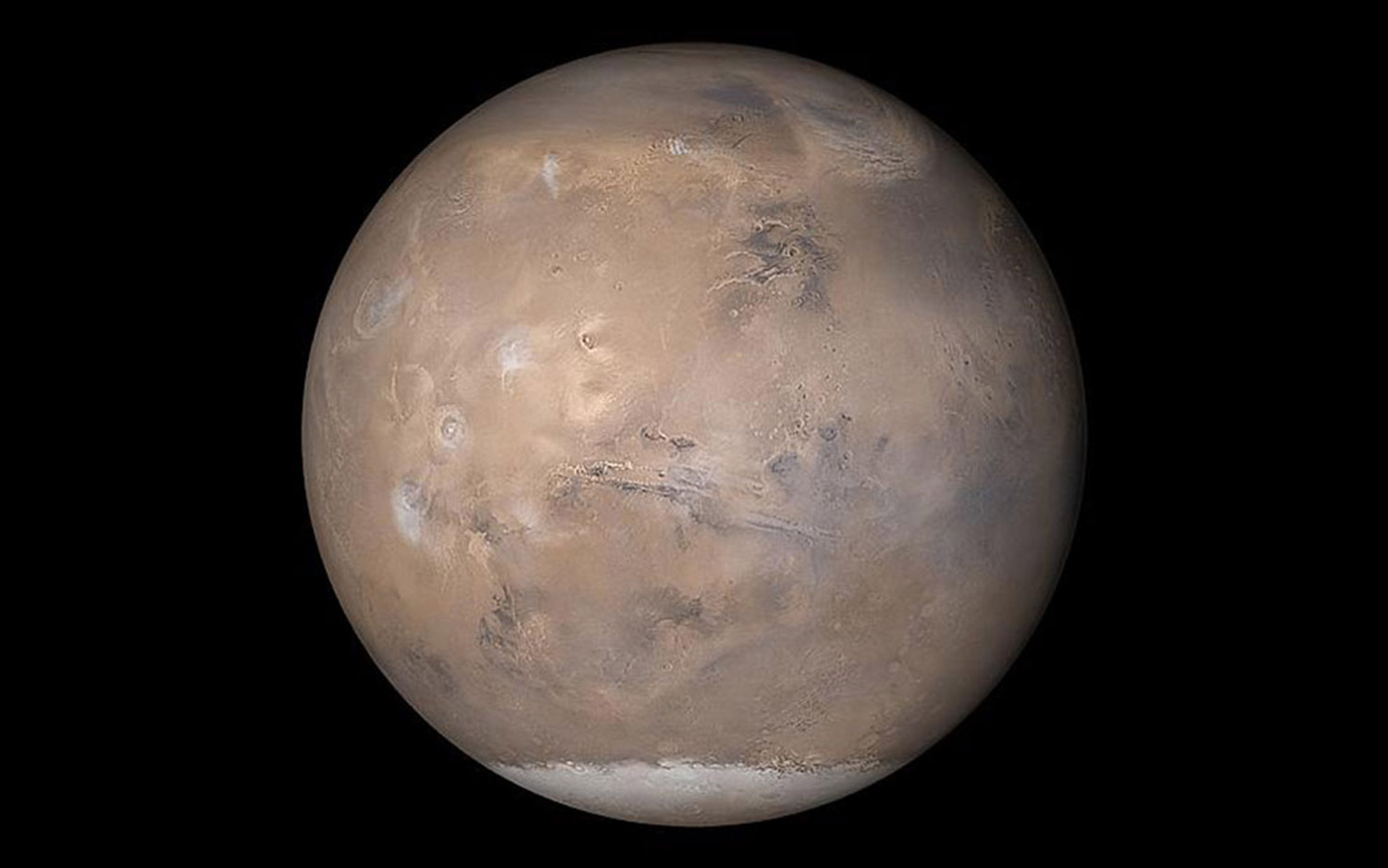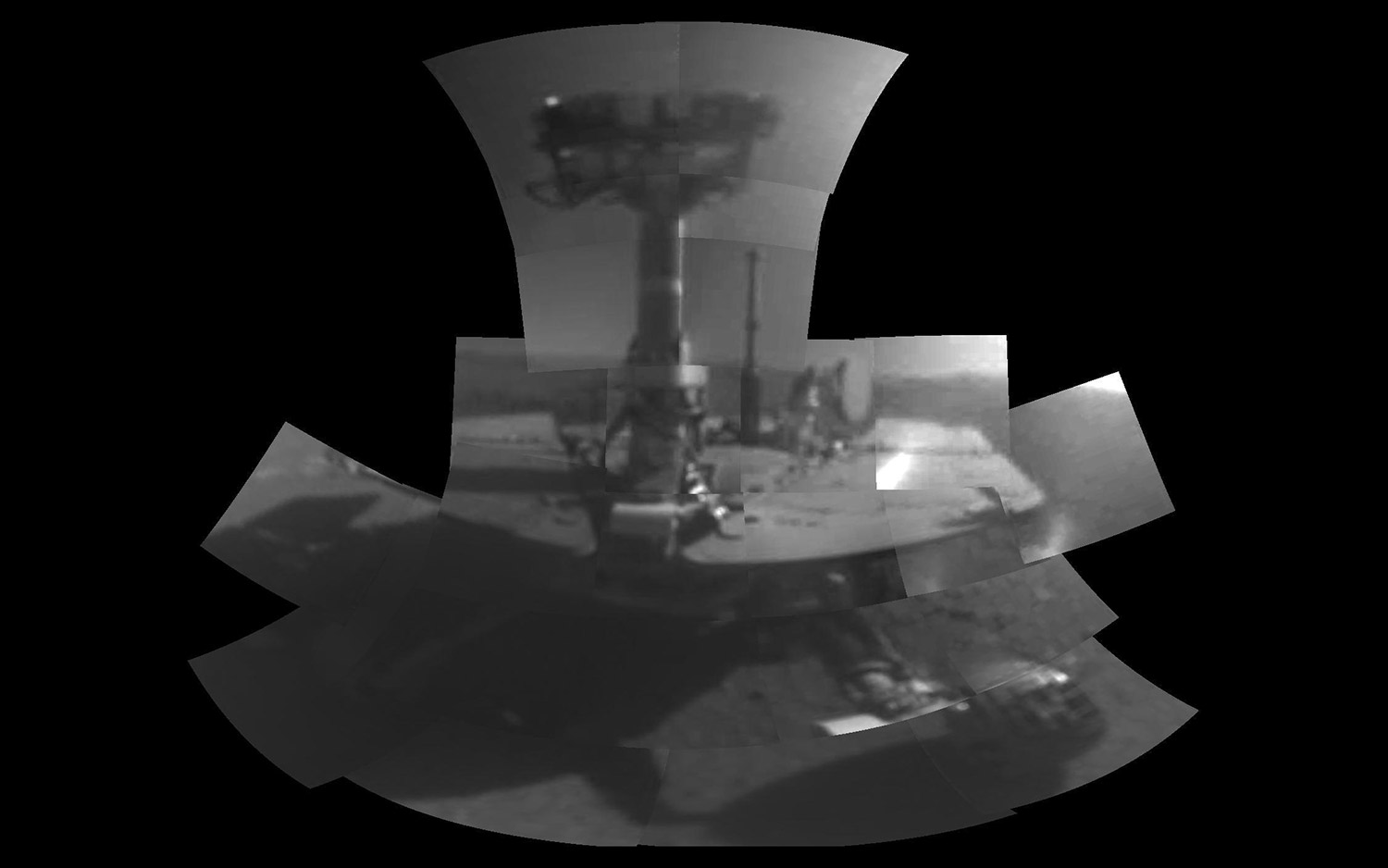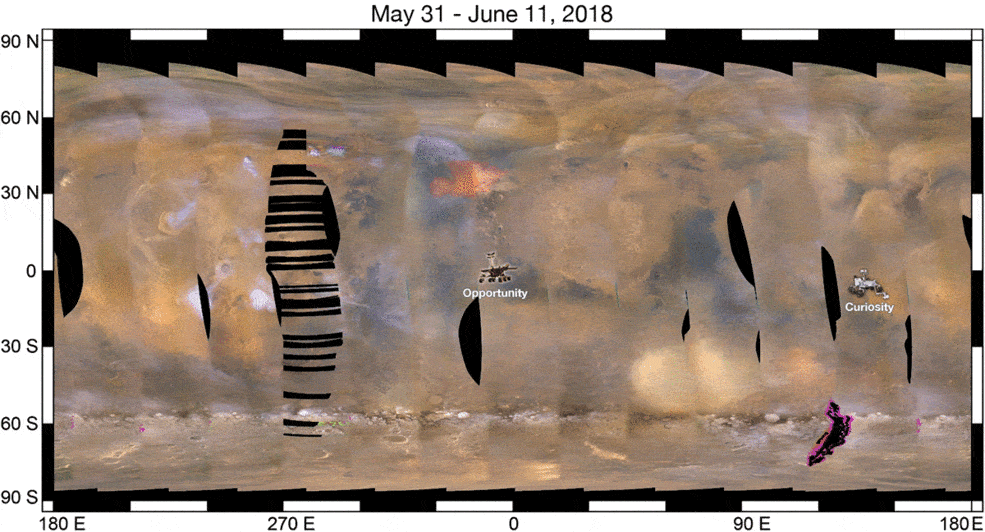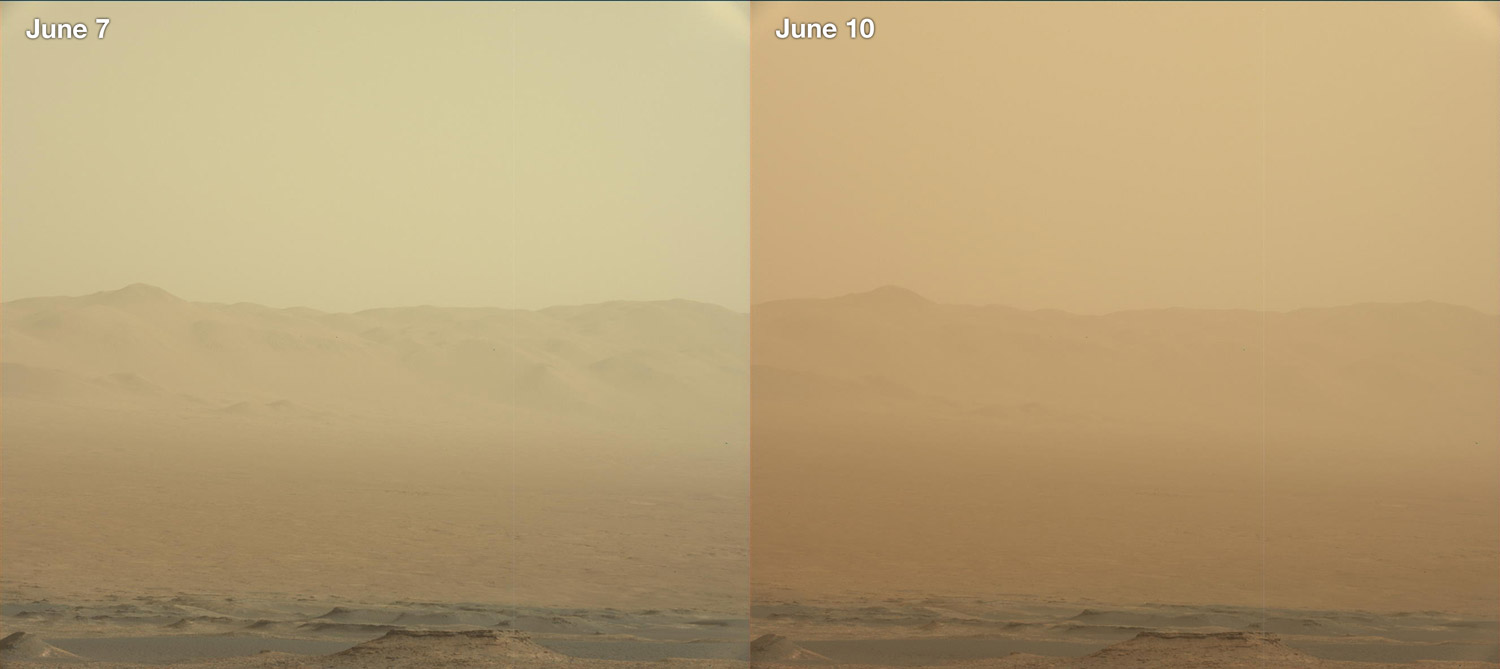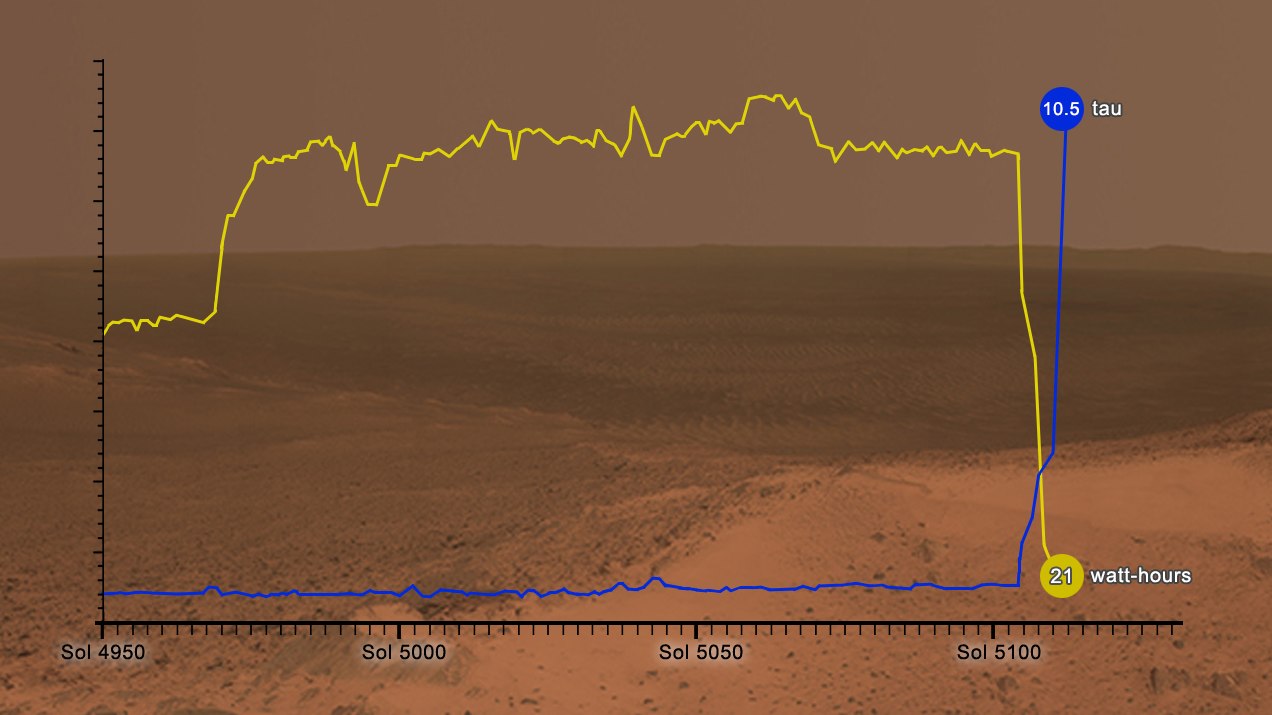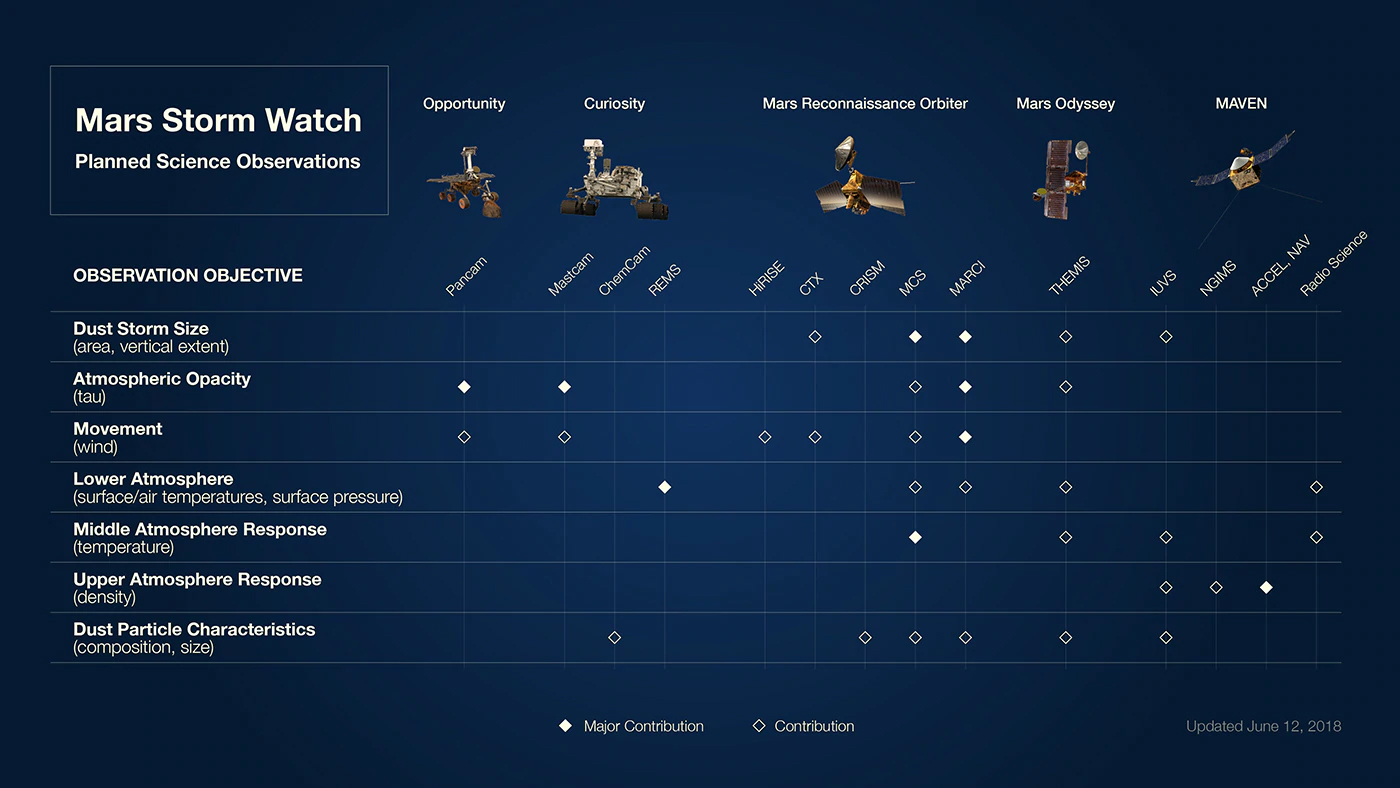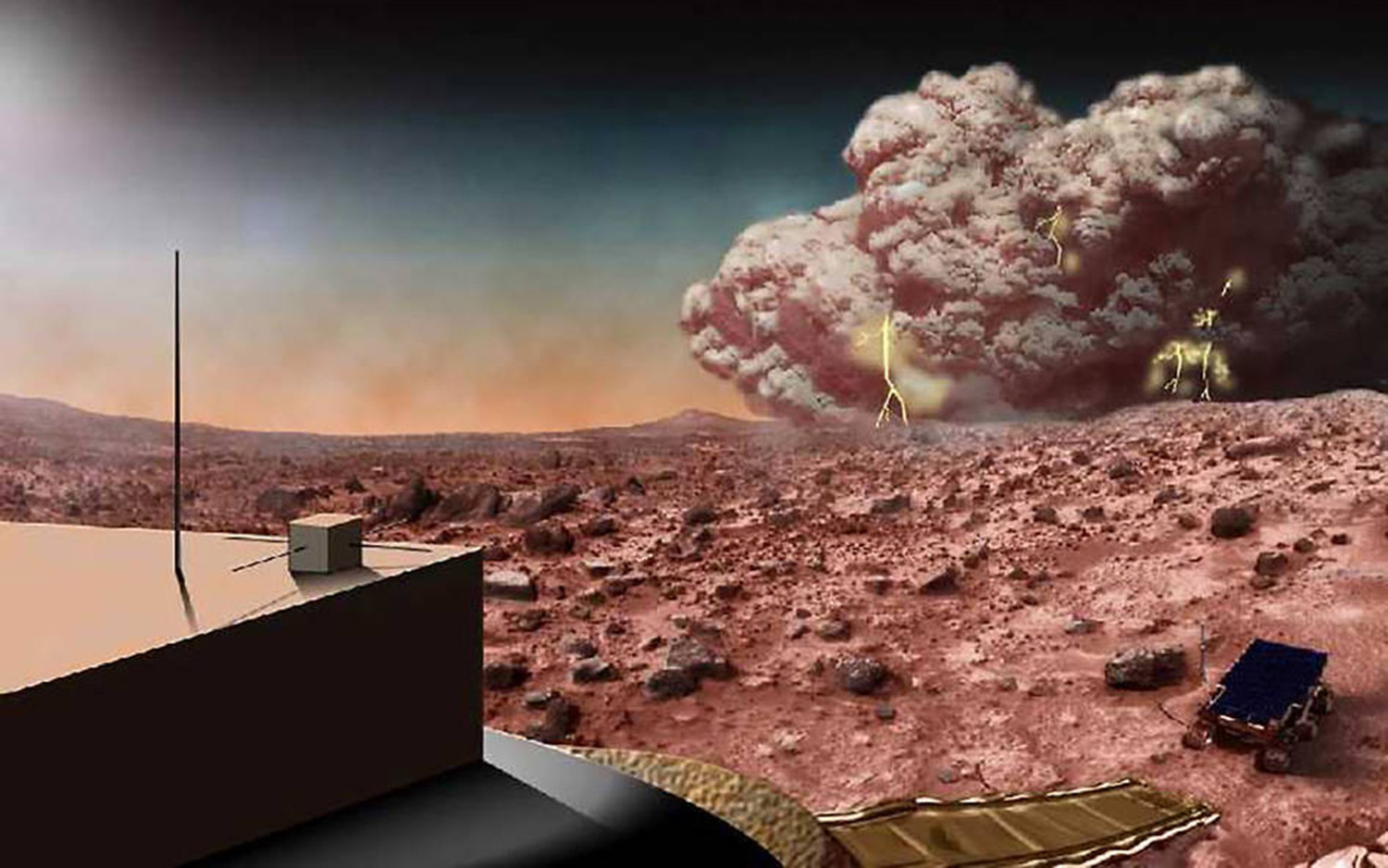Mars Dust Storm 2018: How It Grew & Killed the Opportunity Rover
The Perfect Storm on Mars
In May 2018, one of the most intense dust storms ever seen on Mars began. The dust storm, which grew to completely cover the planet, swept over NASA's Opportunity rover, forcing the robot into survival mode. Here's a look at how the storm grew, how NASA tracked it and how it doomed the solar-powered Opportunity.
A Stormy Surprise
It may be surprising to learn that the first sign of the dust storm for Opportunity did not come from the rover itself. It was NASA's powerful Mars Reconnaissance Orbiter that spotted the dusty tempest on May 30. The storm quickly swelled in size, prompting mission scientists to warn their counterparts running Opportunity (the rover is the blue dot in this MRO image). It was time to batten down the rover hatches.
NEXT: Storm Ready
Storm-Ready Opportunity
As the Mars Reconnaissance Orbiter tracked the dust storm from orbit, Opportunity was busy studying the terrain of its science spot, a region called "Perseverance Valley" on the plains of Mars' Meridiani Planum. (This photo shows a "selfie" by Opportunity from earlier in the mission.)
When Opportunity scientists got word of the impending dust storm, they took action quickly. The rover stopped all science work to conserve power as the dust storm blocked out the vital sunlight needed for the rover's solar arrays. Opportunity would have to ride out the storm in a low-power mode.
A note here on Opportunity: The rover was no spring chicken at the time. It landed on Mars just after its twin Spirit in January 2004 and, and it was 15 years old (it launched in 2003). Opportunity and Spirit were only expected to last 90 days on Mars. Spirit died of the Martian cold in 2010. Opportunity made it well beyond day 5,000.
NEXT: The Days Get Darker
Dust Storm Rising
As the dust storm intensified on Mars, the days grew darker until the sun disappeared. This series of simulated images shows what that would have looked like to Opportunity.
At far left is the sun on Mars during a brilliant mid-afternoon in early June. But as the storm intensifies (toward the right), the sun's light dwindles away until it's a mere pinprick of illumination. With so little sunlight, Opportunity's solar arrays were starved of power.
NEXT: The Rise of the Dark
The Rise of the Dark
Here's another way to see how thick the air was with dust over the Opportunity rover. This NASA chart shows Opportunity's measurements of atmospheric opacity — or how dark the sky is — as the dust storm intensified over time. The spike in red shows that intensification over time.
NEXT: A Fast-Growing Storm
A Fast-Growing Storm
As Opportunity hunkered down for the storm, NASA kept watch from orbit with the Mars Reconnaissance Orbiter. By the second week of June, the storm had grown to cover a quarter of the planet. By June 13, the storm was large enough to reach NASA's Curiosity rover, which was a half a world away exploring Gale Crater.
Breaking space news, the latest updates on rocket launches, skywatching events and more!
On June 20, NASA announced that the dust storm had completely covered Mars.
NEXT: The View from Curiosity
The View from Curiosity
Here's what the oncoming dust storm looked like to Opportunity. These two views from NASA's Curiosity rover, acquired specifically to measure the amount of dust inside Gale Crater, show how the dust increased over three days. The left-hand image shows a view of the east-northeast rim of Gale Crater on June 7, 2018; the right-hand image shows a view of the same feature on June 10. The images were taken by the rover's Mastcam.
NEXT: Mars Dust vs. Rover Power
Mars Dust vs. Rover Power
As the Martian dust storm grew, the Opportunity rover's power levels plummeted, forcing the rover to fall silent on June 10, 2018. (This NASA chart shows how those levels changed over time.) The biggest risk to Opportunity from the dust storm was power loss. During Martian winter, Opportunity would be at risk from bitter cold temperatures that could kill the rover if it could not turn on its heaters.
And if power levels got too low, Opportunity's mission clock (which told the rover when to wake up and check if it had enough power to phone home) could shut down. That would require a lengthy workaround on the rover's part to find out what time it was on Mars before it could call home.
NASA scientists were initially optimistic that Opportunity would survive the monster 2018 storm. After all, it was not the rover's first "dust-up" (sorry, couldn't resist) on Mars.
In 2007, a massive storm encircled Mars for two weeks, and Opportunity lost contact with Earth for days as it endured the dusty weather event. The rover survived, and scientists were hopeful it will do so again.
What about the Curiosity rover? It was totally fine. Curiosity does not use solar arrays for power. It has a nuclear generator to keep itself powered.
NEXT: Keeping Watch on Mars
Tracking the Storm
As Opportunity and Curiosity rode out the storm, NASA continued to track the tempest from space. And the Mars Reconnaissance Orbiter was just one of a fleet of spacecraft that kept a Martian vigil.
NASA's MAVEN orbiter, which is built to study the Martian atmosphere, is one vital asset for studying how dust storms actually work on Mars. NASA also had the Mars Odyssey orbiter available for follow-up observations.
Meanwhile, India's Mars Orbiter Mission spacecraft is also circling the Red Planet. The European Space Agency has two orbiters at Mars: The Mars Express spacecraft and the ExoMars Trace Gas Orbiter (another Martian atmosphere mission). So there was no lack of coverage in tracking this global Martian dust storm.
NEXT: RIP, Oppy
RIP, Oppy

The dust storm began to abate in July, and by mid-September it had died down so much that NASA began a campaign to rouse the still-silent Opportunity. Such efforts continued for months, but the golf-cart-size rover never responded.
Finally, in February 2019, NASA officially declared Opportunity dead. The robot likely suffered a series of serious faults, all of them caused by loss of power, mission team members said.
"We needed a historic dust storm to finish this historic mission," Opportunity deputy project scientist Abigail Fraeman, of NASA's Jet Propulsion Laboratory in Pasadena, California, said at the time.
And the mission was historic. Opportunity covered more distance on the surface of another world than any other robot, and its discoveries, along with those of Spirit, showed that Mars was a relatively warm and wet planet long ago. Spirit and Opportunity also brought space exploration home to many people here on Earth, making the Red Planet feel like a familiar place, mission team members have said.
FINALLY: About Those Martian Dust Storms
Martian Dust Storms
Dust storms on Mars may sound violent, but they won't blow you around like the frightening dust storm in the science fiction film "The Martian."
NASA scientists say the wind speeds on Mars need to be faster than 70 mph (112 km/h) to lift dust into the air. While that sounds fast, the air on Mars is super thin, only a fraction of what we're used to on Earth. So, even a 70 mph (110 km/h) wind is not enough to knock Opportunity over (sorry, Mark Watney!).
Dust storms can transport Martian dust high into the atmosphere, where it can linger for days, weeks or even months, blocking sunlight from light-thirsty rovers. And significant storms aren't terribly rare; Opportunity weathered several smaller maelstroms during its time on Mars before a true behemoth did the rover in.

Tariq is the award-winning Editor-in-Chief of Space.com and joined the team in 2001. He covers human spaceflight, as well as skywatching and entertainment. He became Space.com's Editor-in-Chief in 2019. Before joining Space.com, Tariq was a staff reporter for The Los Angeles Times covering education and city beats in La Habra, Fullerton and Huntington Beach. He's a recipient of the 2022 Harry Kolcum Award for excellence in space reporting and the 2025 Space Pioneer Award from the National Space Society. He is an Eagle Scout and Space Camp alum with journalism degrees from the USC and NYU. You can find Tariq at Space.com and as the co-host to the This Week In Space podcast on the TWiT network. To see his latest project, you can follow Tariq on Twitter @tariqjmalik.
